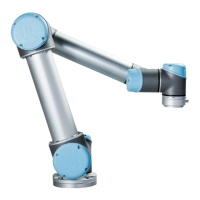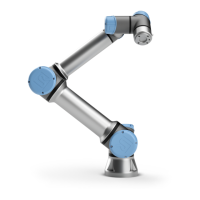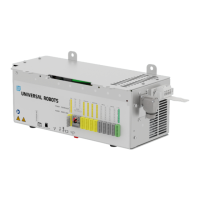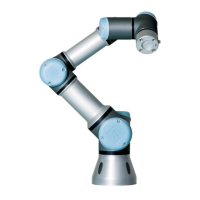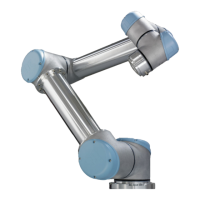13.12 Installation → Features
The application requires the program to be reused for multiple robot installations where the po-
sition of the table varies slightly. The movement relative to the table is identical. By defining the
table position as a feature P1 in the installation, the program with a MoveL command configured
relative to the plane can be easily applied on additional robots by just updating the installation
with the actual position of the table.
The concept applies to a number of Features in an application to achieve a flexible program
can solve the same task on many robots even though if other places in the work space varies
between installations.
13.12.6 Example: Dynamically Updating a Feature Pose
Consider a similar application where the robot must move in a specific pattern on top of a table
to solve a particular task (see 13.5).
Figure 13.5: A MoveL command with four waypoints relative to a plane feature
Robot Program
MoveJ
wp1
y = 0.01
o = p[0,y,0,0,0,0]
P1_var = pose_trans(P1_var, o)
MoveL # Feature: P1_var
wp1
wp2
wp3
wp4
Figure 13.6: Applying an offset to the plane feature
Robot Program
MoveJ
S1
if (digital_input[0]) then
P1_var = P1
else
P1_var = P2
MoveL # Feature: P1_var
wp1
wp2
wp3
wp4
Figure 13.7: Switching from one plane feature to another
The movement relative to P1 is repeated a number of times, each time by an offset o. In this
e-Series II-56 Version 3.11
Copyright © 2009–2019 by Universal Robots A/S. All rights reserved.
